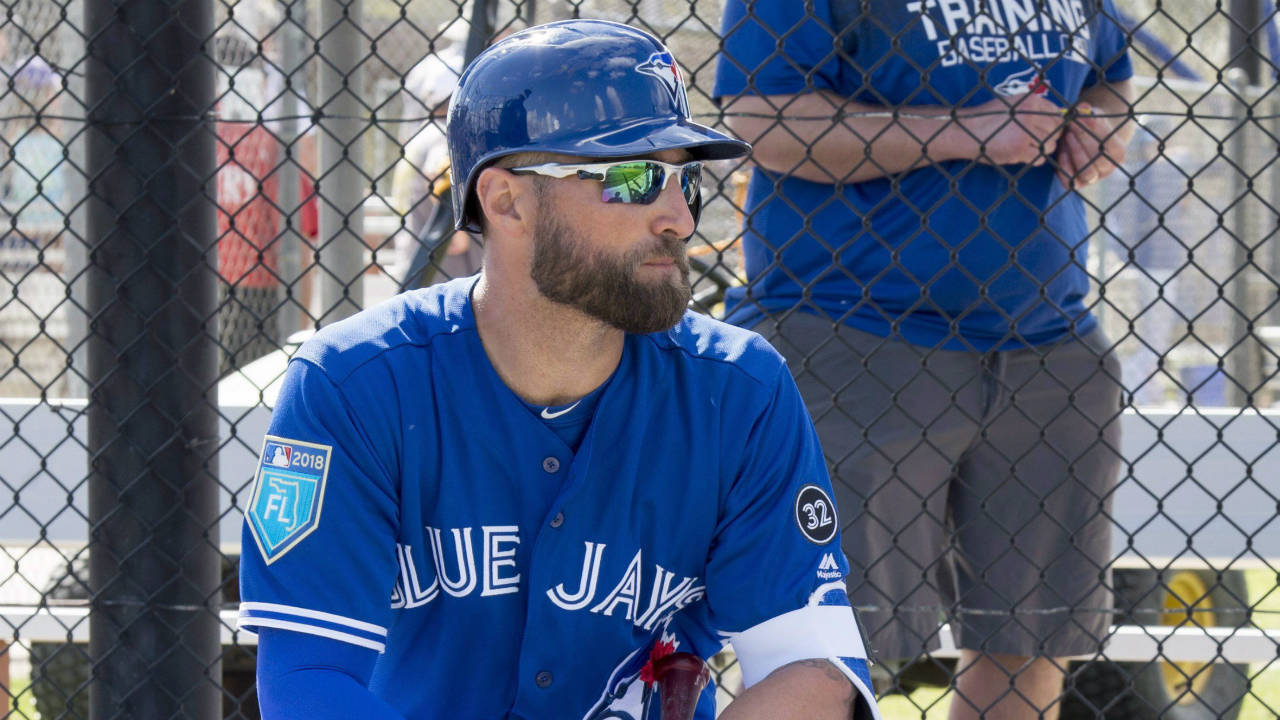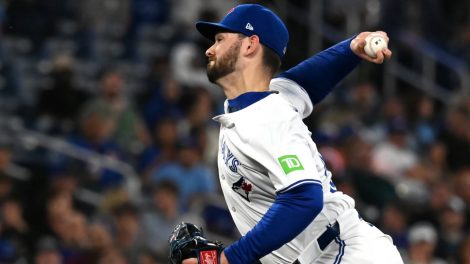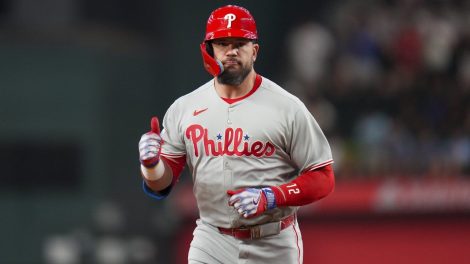DUNEDIN, Fla. — This is a story about Kevin Pillar, but it’s going to start with Justin Smoak. As you are no doubt aware, Smoak enjoyed a breakout season in 2017, absolutely smashing his career bests in every offensive category across the board, finishing with 38 home runs as he batted .270/.355/.529. It was quite a year.
He was voted into the all-star game for the first time in his career, and, naturally, was asked to participate in the home run derby. The interesting thing is Smoak flat out refused.
As it happens, part of Smoak’s renaissance was due to an adjustment to his batting practice routine — he stopped swinging for the fences. Earlier in his career, Smoak would try to hit nearly every pitch his coach threw into the seats. But in 2017, he chose to focus on quality of contact instead, prioritizing the smoothness of his swing and getting the barrel of his bat to every ball, letting them fly where they may.
So, the thought of participating in a home run derby — televised, competitive batting practice, essentially — felt completely unnatural to him. It wasn’t what he did anymore. Pillar took notice. And decided it wasn’t what he was going to do anymore, either.
“I learned firsthand watching the way Smoakey went about his work last year, watching him hit BP every day, and seeing how it translated into the season,” Pillar says. “He was really working on his craft as a hitter, and just trying to be relaxed and smooth in BP. I’m really trying to understand that.”
That’s just one of a number of adjustments the constantly sharpening Pillar is making this season. You’ve probably heard that before. At times, Pillar can seem to be endlessly tweaking, searching for improvements at the plate that have oft been elusive. But he’s a worker, it’s just what he is. He’s an NCAA Division II walk-on who was selected 979th overall in the MLB draft and somehow stuck in the big leagues. It’s the only way he knows to get better. It’s gotten him this far.
[snippet]
“I worked my butt off in the off-season to come back and improve my game any way I can,” the 29-year-old says. “I’m never going to be a guy who’s content with where I’m at. I’m always going to try to push the boundaries, push the limits in my game, and make adjustments when I can. And it’s nice to go out there and be rewarded with it.”
Those rewards haven’t always come easily, but they certainly have this spring, as Pillar is 7-for-12 with a home run, a double, and a walk. He attributes his success to many things, primarily the change in preparation that he picked up from Smoak last year. He now spends batting practice exclusively working on getting his barrel to the ball, and carries that approach over into the game, where he’s no longer trying to hit home runs.
If Pillar can make hard contact, he’s happy. He worries less about where the ball ends up — although something in the air is preferable. He’s relying on the velocity of game-speed pitches, coupled with the energy and adrenalin that surges through players in a stadium environment, to allow home runs to happen when they happen.
Controlling rhythm and tempo is everything. Pillar is focused on being precise at the plate, rather than over-swinging, and putting too much effort into driving every ball. He’s trying to stay loose and relaxed, but quick and dynamic at the same time.
“I’m not concerned about trying to hit X amount of homers or X amount of doubles,” he says. “I’m just trying to put together good at-bats and stay within myself. And if the ball goes, the ball goes.”
To that end, Pillar came into camp leaner than normal this year, having lost 15 pounds this off-season. You might presume he’d notice that difference most in the field, where he’s bound to be a little lighter on his feet. But Pillar says he actually senses the difference most at the plate, where he’s able to operate with more mobility.
Ballplayers call it separating — the act of getting the bat further back in the load phase of your swing before you shoot it into the zone, generating as much speed as possible while driving through the ball. That’s how you make solid contact, and produce the high exit velocities that more often lead to positive results.
“Losing some bulkiness in my upper body has allowed me to do some things with the bat that previously I’ve wanted to do, but just wasn’t physically able to do,” Pillar says, noting he’s found it easier to get to inside pitches since dropping the weight. “Now, I don’t have that feeling of trying to take over the swing with my upper body and trying to muscle balls. I’m really starting to utilize my legs.”
Of course, Pillar knows a lack of discipline will always be a criticism he faces until he proves he can be more selective. He’s swung at more than half the pitches he’s seen in his career, and nearly 40 per cent of the pitches he’s seen outside the zone. The major-league average last season was 10 percentage points lower.
[relatedlinks]
“On-base is key,” he says. “You’re going to face certain pitchers and certain at-bats where these guys are going to make quality pitches. And it’s hard to hit those really good pitches in the game. You need to be disciplined enough to sit around and work counts and wait for mistakes to show up. I’m really just trying to allow the game to dictate what I’m going to do at the plate.”
We’ll see if it all comes together. Pillar is a career .264/.302/.390 hitter, numbers he’d no doubt like to move north. Whether or not his changes and adjustments make a difference, we’ll only know come autumn. He’s made adjustments before that haven’t worked. He’s made some that have. Improvement is often a trial-and-error process. There is, however, going to be one definite difference for Pillar this season.
This October, Pillar became a first-time father, when his wife, Amanda, gave birth to a seven-pound, nine-ounce daughter, Kobie Rae. Now, Pillar tries to spend less time idling around at the ballpark, shooting the breeze with teammates. He comes in, gets his work done efficiently and thoroughly, and returns home to his family. During the season, when he’s not seeing the results he wants to at the plate, he hopes returning home to his daughter provides a needed buffer between him and the game.
“That’s the hard thing — people think we’re just baseball players, or baseball robots. We’re human beings,” he says. “That’s the biggest adjustment for me right now — understanding that I’ve got a bigger purpose in this life than just being a baseball player, but being a good father.
“When I get home and see my little girl, I think that puts it all in perspective for me.”
[snippet id=3305549]









